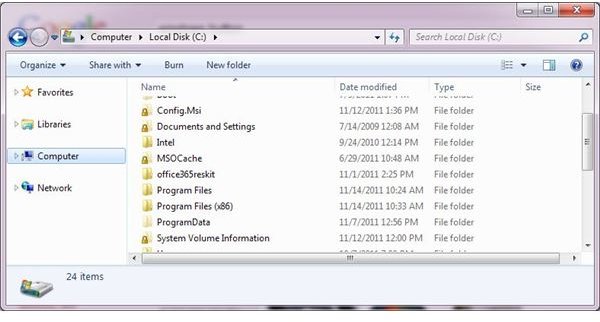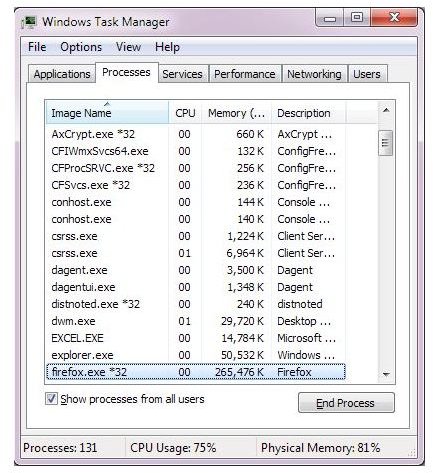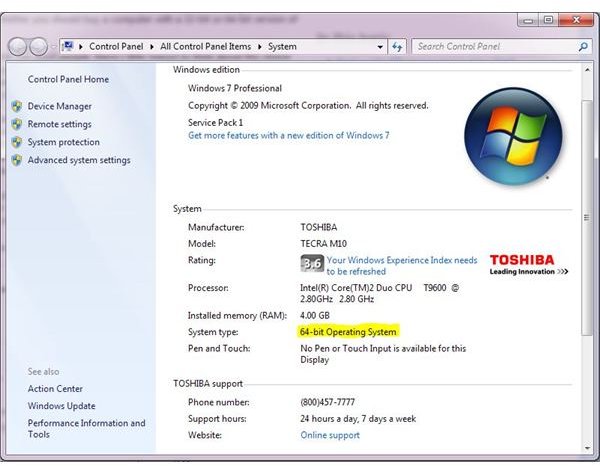How to Run 32 Bit Apps on Windows 7 64 Bit
The Rise of 64-bit Computing
I never would have guessed that 2011 would be the year 64-bit computing took off. Even though 64-bit operating systems have been around since 1985, only now are they becoming popular.
Windows 7 blew the lid off of 64-bit computing by allowing us to keep using all of the applications we’ve used in the past (for the most part) while also allowing us to take advantage of the benefits that 64-bit computing offers. Even computer manufacturers sell Windows 7 64-bit as the default base pre-installed OS for most of their computers.
There’s a lot of mystery to 64-bit operating systems – what does it mean for you and your old 32-bit apps on Windows 7? How do you know if you are running Windows 7 64-bit and if you aren’t, can your computer support it? How do you know if your applications are running in 64-bit mode? All of these questions will be answered below! For a more in-depth look, take a look at George Garza’s article on the differences between 32-bit and 64-bit architectures.
Running Windows 7 64-bit
Before you dive into whether or not you are running your applications in 64-bit mode, you need to know if you are using a 64-bit operating system.
- In Windows 7, click on the Windows button and right click on Computer then select Properties.
- In the window that appears, scroll down to the ‘System’ section. You will see ‘System type’ listing the type of operating system you are running. In Figure 1, you can see I’m running a 64-bit operating system.
If you aren’t running Windows 7 64-bit, you can run a tool to determine if your computer would support a 64-bit operating system.
- In Windows 7 or Vista, click on the Windows button. In the search bar type ‘performance information and tools’.
- Click the link ‘View and print detailed performance and system information’.
- Under ‘System Type’ you will see a listing for ’64-bit capable’ with the word ‘Yes’ or ‘No’.
Most computers made within the last several years will have processors capable of supporting a 64-bit operating system. If you want to take the plunge and ‘upgrade’ to 64-bit, take a look at Bruce Tyson’s article on upgrading from 32-bit to 64-bit Windows 7.
Running 32-bit Apps on Windows 7
The good news is that for most applications, you don’t need to do anything special to run them on Windows 7 64-bit edition. Run applications the ‘normal’ way and they should automatically run in the proper mode.

Windows uses a system called ‘WOW64’ which stands for ‘Windows on Windows 64’ to do a few things in the background to keep the process seamless, including registry and file redirection. WOW64 manages separate directories for both 32-bit and 64-bit applications. The following locations are used:
- 32-bit applications are stored under c:\program files (x86)
- 32-bit system files are stored under c:\windows\syswow64
- 64-bit applications are stored under c:\program files
- 64-bit system files are stored under c:\windows\system32
An easy way to determine if you’ve installed a 64-bit or 32-bit application is to go under the c:\program files\ directory. If it’s under ‘c:\program files (x86)’, it’s a 32-bit app (Figure 2).
Before we dig into troubleshooting potential issues, let’s discuss how to determine if an application is running in 32-bit or 64-bit mode.
-
Start the application as you normally would.

-
Open Task Manager by going to the Windows button and typing ‘task manager’.
-
Under the ‘Applications’ tab you will see a list of all running applications. Right click on the application you want to investigate and select ‘Go to process’.
-
This will bring you to the Process tab and will highlight your application.
-
You will notice some applications have ‘*32’ after them – these are the applications that are running in 32-bit compatibility mode. Applications without are running in 64-bit native mode. You can see from Figure 3 that my copy of Firefox is running in 32-bit mode.
In most circumstances, it’s perfectly fine to let applications run in 32-bit mode. The application may not take full advantage of the resources offered, but most applications don’t need the full power of your computer to run well. In any case, you may want to check with the developer of your favorite applications to see if they offer a native 64-bit version.
Troubleshooting Compatibility
Some 32-bit applications will not run properly on a 64-bit operating system. Applications that rely on 32-bit device drivers such as Antivirus or Antimalware software will not work. In order to get around this, you may need to see if there is an updated version of the application you are trying to use or you may need to use a desktop virtualization solution such as Windows 7 ‘XP Mode’, VMWare Workstation or Sun VirtualBox.Take a look at Donna Buenaventura’s article on which is better – Vmware versus Virtualbox versus Virtual PC 2007.
For more information regarding compatibility issues, M.S. Smith wrote an excellent article on explaining compatibility problems with 64-bit Windows 7 – be sure to check it out.
I hope that quick overview of running 32 bit apps on Windows 7 is helpful - be sure to leave comments if you have any questions!
References
- Screenshots taken by Author
- Microsoft 32bit and 64bit Windows Frequently Asked Questions
- Author’s knowledge of and experience using Microsoft Windows 7
